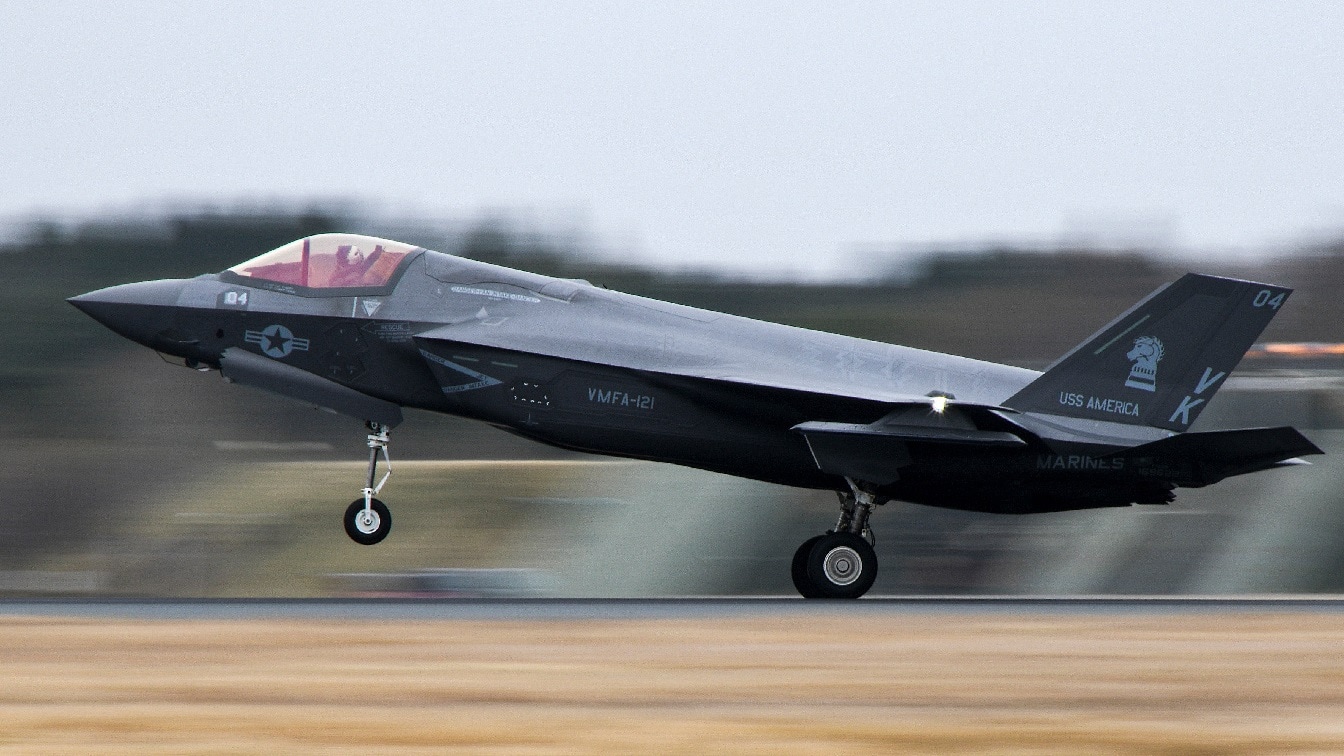The F-35 stealth fighter jet is becoming more relevant with every day that passes.
In January, a U.S. Marine Corps F-35B Lightning II successfully landed for the first time on the USS Tripoli, an amphibious assault ship, showcasing the versatility of the stealth fighter jet in the event of a conflict with Russia or China.
F-35: Recovery Successful
On January 11, an F-35B Lightning II assigned to the Marine Strike Fighter Attack Squadron (VMFA) 122 landed successfully on the USS Tripoli, an action that introduced the amphibious assault ship into fifth-generation aircraft operations.
“This is what Tripoli was built for. The crew and supporting organizations have worked incredibly hard to get us to the point where we can launch and recover aircraft, rising to every challenge the Navy has put before them since we commissioned. I am extremely proud of what we have accomplished. The crew has sacrificed time away from their families and friends to accomplish our mission. Days like today prove that the time those families have given us isn’t wasted,” Captain Joel Lang, the commanding officer of the USS Tripoli, said in a press release.
The successful recovery sheds some light on the significant capabilities of the U.S. Navy. In addition to aircraft carriers, the Navy can launch and recover aircraft from ships like the USS Tripoli, thus maximizing its potential and opportunities in the event of a conflict. To be sure, an amphibious assault ship isn’t the same as a nuclear aircraft carrier. The former can carry fewer aircraft and is also restricted by the type of aircraft it can carry and launch. However, the benefit of having several ships—regardless of the type—that can launch aircraft confuses an adversary and hinders its calculations.
“It was an honor to support Tripoli in accomplishing such an important event. The Marines and pilots from VMFA-122 and (Marine Operational Test and Evaluation Squadron) VMX-1 are excited to see Tripoli achieve its fixed-wing flight certification,” Major Randy Brazile, the VMFA-225 landing signal officer, stated.
The USS Tripoli is an America-class amphibious assault ship that operates under Expeditionary Strike Group 3.
“Everything flowed perfectly. We did everything we practiced for. I got to launch the first jet ever from Tripoli; it was a good feeling. We’re all very excited to do it again,” Aviation Boatswain’s Mate (Handling) 1st Class Paul Salame said about the first-ever recovery of an F-35 by the USS Tripoli.
F-35: Offering Options
There are three versions of the F-35 Joint Strike Fighter. The F-35A is the conventional landing and take-off version. The F-35B is the Short Take-Off and Vertical Landing (STOVL) iteration specifically designed for the U.S. Marine Corps (Italy and the United Kingdom also use it). Finally, the F-35C is the aircraft carrier version of the fighter jet.
Although all three iterations of the costly aircraft have almost the exact same capabilities, they differ in the way that they land and take off, offering commanders more options on how to employ them. For example, the U.S. Air Force launches F-35As from regular airbases, but the Marines can launch their F-35Bs from both a regular airbase but also from a warship like the USS Tripoli, while the Navy and Marine Corps can deploy their F-35Cs from aircraft carriers.
1945’s New Defense and National Security Columnist, Stavros Atlamazoglou is a defense journalist specializing in special operations, a Hellenic Army veteran (national service with the 575th Marine Battalion and Army HQ), and a Johns Hopkins University graduate.

